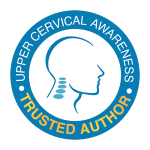Migraines – Relieving the Throbbing Head Pain in Dubuque, IA

 Migraines are neurological in nature and, therefore, not just a bad headache. In fact, some migraines can occur without any head pain. Migraines can be extremely debilitating. You or someone you know probably struggles with migraines, maybe even on a daily basis. Migraines are the third most prevalent and sixth most disabling disease worldwide. Sadly, researchers have not really come to understand what causes this condition, and because of this, it often goes misdiagnosed and poorly cared for.
Migraines are neurological in nature and, therefore, not just a bad headache. In fact, some migraines can occur without any head pain. Migraines can be extremely debilitating. You or someone you know probably struggles with migraines, maybe even on a daily basis. Migraines are the third most prevalent and sixth most disabling disease worldwide. Sadly, researchers have not really come to understand what causes this condition, and because of this, it often goes misdiagnosed and poorly cared for.
Interesting Migraine Facts
Here are some facts you may not know about migraines:
- 1 out of every 4 households has someone with migraines.
- Migraines are most common during the ages of 25 to 55.
- Migraines run in families — as many as 90% of migraines sufferers have a family history of migraines.
- As many as 12% of the population suffers from migraines.
- Every 10 seconds someone in America goes to the ER with head pain.
- Most with migraines suffer once or twice a month. However, 4 million people have chronic daily migraines.
- Women get migraines 3 times more often than men.
- Around 10% of school-age children have migraines.
- Half of those with migraines experience their first attack before age 12. In fact, migraines have been seen in children as young as 18 months. Colic is now thought to possibly be an early form of a migraine.
- Migraine costs are estimated to be as high as $36 billion in the USA due to loss of productivity and healthcare costs.
- Healthcare costs are 70% higher in a family that has a member with migraines as opposed to those without.
- Migraine research is severely underfunded. In 2015, only 50 cents per migraine sufferer was used to do further research.
Symptoms of Migraines
The following are the most common symptoms of migraines and what percent of sufferers experience them:
- Light sensitivity – 80%
- Throbbing, pulsating pain – 85%
- Visual disturbances – 44%
- Sound sensitivity – 76%
- Vomiting – 29%
- Aura – 36%
- Pain only on one side – 59%
- Nausea – 73%
You may also experience:
- Sensitivity to certain odors
- Vertigo — a spinning sensation
- Numbness and tingling
- Weakness
- Feeling lightheaded or dizzy
- Puffy eyelids
- Extreme exhaustion
- Moodiness
- Food cravings
- Problems concentrating
- Constipation or diarrhea
- Hives
- Neck pain
- Fever
If you experience migraines, we recommend that you do the following:
- Write it down: Keeping track of your attacks can help you pinpoint what is triggering them. Include the date, time, pain level, what you were doing immediately before the pain started, what you were doing the day before, changes in your normal routine, and how long the pain lasted. Also, keep a record of what symptoms you had and what made it worse or better.
- Analyze: Are you seeing a pattern develop? Do your migraines happen after missing sleep, eating a particular food, weather changes, increase in stress levels, or missing meals?
- Avoid it: Once you identify your triggers, do all that you can to avoid them.
- Is it hereditary? Find out if anyone else in your family suffers from migraines.
- Visit your local upper cervical chiropractor: This can help ensure that your migraines are not connected to a misalignment of your upper cervical spine. We’ll discuss more about this a little later.
What Causes Migraines?
Unfortunately, there is still no definitive proof as to the actual cause of migraines. The current pattern of thinking about the source of migraines has to do with the advances that have been observed in technology helping us to see how the brain and nervous system are intricately connected and work closely together. It was previously thought that blood vessel constriction and dilation in the head were why migraines occur. Early medications focused on targeting the blood vessels to reduce pain. Thinking has now changed. Researchers are seeing how migraines are neurological in nature, and migraines involve the pathways of nerves and certain chemicals in the brain. Migraines also have a genetic component.
Migraines are moving targets, meaning that symptoms can change from one attack to the next, and many people can experience more than one type of a migraine. Migraines are identified by their predominant symptoms.
An Often Overlooked Link to Migraines
It has been repeatedly recognized by upper cervical chiropractors, that migraines have a connection to a misalignment in the bones of the upper neck, in particular, the C1 and C2 vertebrae. It has been noted in various case studies that many who suffer from migraines have had some type of trauma to the head or neck before the onset of their migraines. This may have included whiplash, sporting accidents, or simple trips and falls. The top bones of the neck are the most freely movable in the spine, making them vulnerable to moving out of their proper position. How does this cause migraines?
The C1 (atlas) and C2 (axis) were designed to protect the brainstem so that it can perform its job of sending signals to the brain about the body. A misalignment of these bones put pressure on the brainstem and hinders its ability to function normally leading to migraines.
At Asbury Family Chiropractic, we use a technique differing greatly from traditional chiropractic in that we do not resort to popping or cracking the neck or back to get positive results. The method we use is called Atlas Orthogonal and is very gentle. It is based on scientific measurements and imaging to help us to locate the problem and work to correct it. It often only takes a couple of adjustments for our patients and those in case studies to see positive results. Some even see their migraines go away and not return.

